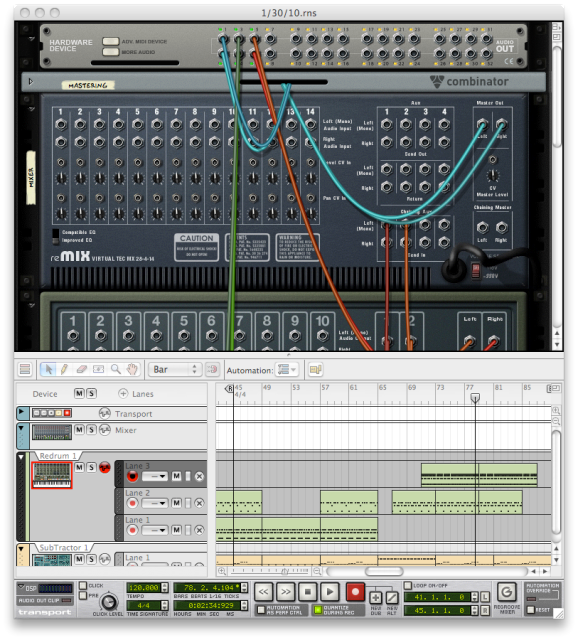Regarding Truant's work: I would say Addictive Drums sound a lot better in general. I can still hear some machine-gunning from the snare and whatnot, but it's pretty close. Lots of attention to detail, and not especially complex parts. Surprisingly good sounding for a podxt on the guitars and bass. Perhaps not every emulation is amazing; there's some fuzziness and phasiness on certain signals that sounds unnatural.
He also mults the bass - basically duplicates the track how many ever times, and designates each as belonging to a separate frequency band or makes them sound different entirely. For example, track 1 could be Bass_Low, where you have a low pass at say... 250Hz. Then there's track 2 which is Bass_Mid, with a high pass around the same area and a low pass around 4kHz. Finally there's track 3 as Bass_High, with a high pass around 4kHz. There are important frequencies in each of these ranges even for bass. It's best to listen for phase cancellation aplenty with this technique, as you do have crossover ranges, but I've never had any major problems with it.
I know this sounds almost exactly like multiband compression. Still, it gives you a lot more control over the shape of a sound rather than just compressing a frequency range. You might saturate, add a delay, add some other effect, add a transient designer, compress, eq, etc to just one bass track of the three. (It also has a lot of potential for abuse I suppose.)
Imogen Heap does this for vocals. Michael Brauer (look him up) does this for bass and snares quite a bit, too. It helps reinforce harmonics that compression does not bring out - because as you know, bass can hit some fundamentals much harder than others. It increases transferability between systems.
...Unfortunately none of that's going to fix your major problems. Better programming, a better choice of samples, and a better sense of space would help greatly.






